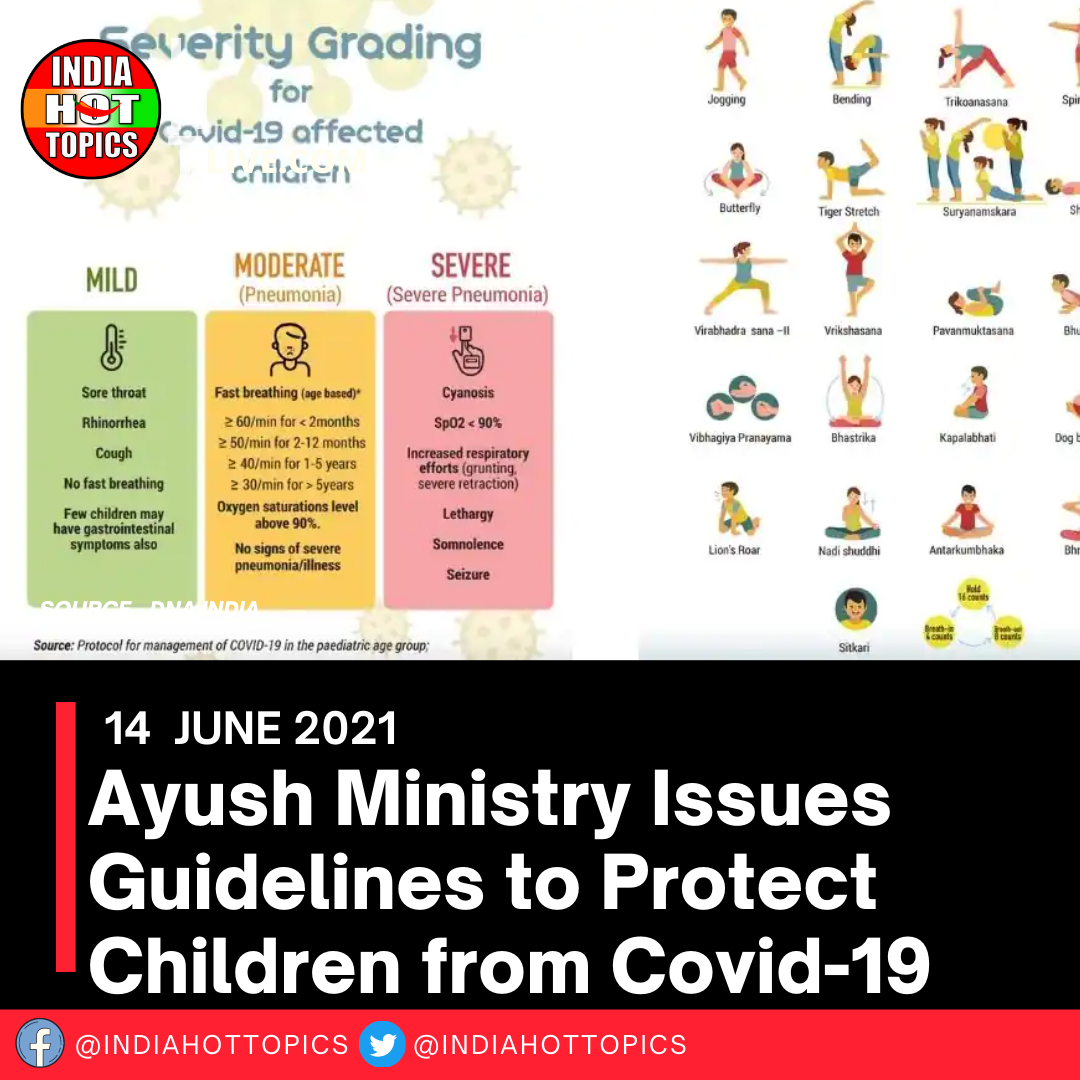In the detailed document prepared by the Ministry of AYUSH for the safety of children, the guidelines include preventive health care through Ayurvedic medicines and naturopathy, wearing of masks, yoga, monitoring of five warning signs, tele-consultation. There are options to choose from and vaccinations for parents. Ongoing covid-19 pandemic.
“However, infection in children is usually mild compared to adults and most children with COVID-19 infection may not require any specific treatment. It has been observed that prophylaxis (preventive treatment) is the best way to protect children from this deadly virus,” a 58-page document from the ministry accessed and reviewed by News18 shows.
The guidelines state that “in various studies conducted so far, certain ayurvedic drugs have shown their efficacy in the treatment of COVID-19. Co-therapy in obesity, type-1 diabetes, chronic cardiopulmonary disease, or immunocompromised conditions.”
“Children with a history of morbidity may be at higher risk, although children have strong immunity, but with the emergence of many mutant virus strains, it is necessary to follow all protocols related to COVID-19 to prevent its effects” mentioned in the document.
The guidelines also state that unlike adults, it is very difficult to plan various preventive and management strategies in children due to their wide age range and anatomical, physiological, immunological and psychological differences.
The guidelines are complementary (add-on to offer contemporary line of management) to COVID-19 appropriate behavior and precautionary measures and should not be taken as a substitute,” the document says as a disclaimer, mother- Asks to consult father All remedies as prescribed by a qualified AYUSH doctor need not be advised to all children.
Advice for kids:
The guidelines stress children to wash their hands frequently and wear masks outside their homes.
“If the child does not wash their hands voluntarily, giving a small reward may be helpful,” the document said, adding that masks are mandatory for children aged 5-18, while those aged between 2-5 For children of one year old, the mask is desirable, under the supervision of parents.
The guidelines state that non-medical or fabric three-layer cotton masks are preferable for children and children can be provided with attractive, colorful and trendy masks for good compliance.
It said that children should stay at home to the extent possible, avoid travel and help them stay connected with friends and family members through video and phone calls.
The guidelines state that children suspected of Covid should not be in contact with their grandparents as the elderly are at a much higher risk of serious illness.
Parents have also been advised to monitor the child for five warning signs – fever lasting more than four-five days, decreased oral intake, lethargy of the child, and oxygen drop below 95%. If any of them are present, one should seek medical opinion.
Measures to take:
The guidelines state that children should be given lukewarm water to drink, ensure hygiene by proper brushing in the morning and night for children above two years of age and oil pulling for children above 5 years of age and Gargling should be done with warm water.
The guidelines state that oil massages, nasal oiling and yoga practices such as pranayama and meditation and other exercises as per the capability of a 5+ year old child should be encouraged.
Ayurveda prophylactic measures and immunity-building solutions for children such as turmeric milk, chawanprash and decoction of traditional herbs (ayush bal kwatha) and ayurvedic medicines for symptomatic children are prescribed under the guidance of Ayurveda practitioners.
Children should also take adequate sleep and easily digestible, fresh and warm and balanced diet. The guidelines also recommend anti-microbial fumigation on children’s play areas, cots, bedding, clothing and toys every evening.
“Help follow the new normal with positivity. Tell them (the kids) how it helps, rather than how difficult it is. Reassure them that this is a passing phase. Raise hope by counting the blessings,” the guidelines read.
News Source: News18


 Ranbir Kapoor3 weeks ago
Ranbir Kapoor3 weeks ago
 Sunny Leone2 weeks ago
Sunny Leone2 weeks ago
 Mahakumbh2 weeks ago
Mahakumbh2 weeks ago
 Parineeti Chopra3 weeks ago
Parineeti Chopra3 weeks ago
 Pahalgam Attack1 week ago
Pahalgam Attack1 week ago
 American Dream4 days ago
American Dream4 days ago
 UP Board Result 20252 weeks ago
UP Board Result 20252 weeks ago
 Trending3 weeks ago
Trending3 weeks ago












.1.jpg)
.jpg)









